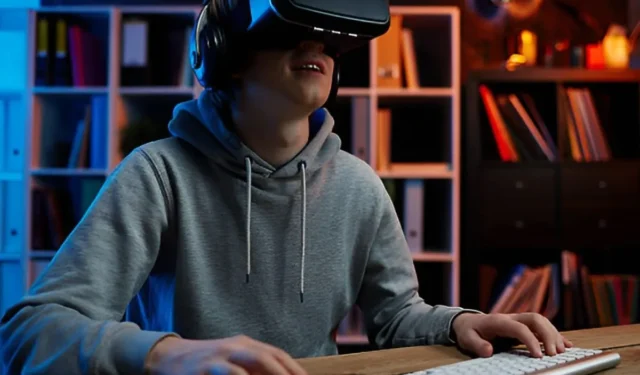
Virtual reality, or VR gaming, has dramatically altered the associated business by offering players unprecedented immersion and engagement. VR technology allows players to join a virtual environment and play games in new ways. VR gaming, on the other hand, is resource-intensive and requires a strong gaming Computer to work successfully.
To properly enjoy VR gaming, you must optimize your gaming PC to meet the high demands of virtual reality. A strong GPU, CPU, and Memory will be required. This post will go over five important techniques to optimize your gaming PC for VR gaming, allowing you to have a genuinely immersive VR gaming experience.
Changing game settings and four additional techniques to prepare a gaming Computer for VR gaming
1) Hardware upgrade
A virtual reality gaming Computer must have some impressive specifications. Every VR game has some minimal requirements. Yet, reaching simply the bare minimum will result in a poor game experience.
Gamers must have a good Computer that satisfies the minimum requirements. A virtual reality gaming PC, for example, should have at least a current generation i5 or Ryzen 5 processor, 16GB RAM, an M.2 SSD, and an RTX 3060 GPU.
2) Software installation and configuration
Users must install additional software in addition to the hardware to adjust and optimize any System for VR headsets. Users must first update all CPU, GPU, and motherboard drivers. They should also install all of the VR headset’s drivers and software.
There is a plethora of VR headset-specific software accessible online. Users should also change their Windows settings, such as turning off full-screen optimization in the app properties for Prepar3D.exe, as well as turning off Game Bar and the GeForce Experience Share In-game Overlay.
3) Disabling f.lux
f.lux is a piece of software that alters the color temperature of a display according on the user’s location and time. It is an excellent tool for reducing eye strain. Yet, it frequently interferes with the performance of VR headsets.
Before connecting to the VR headset, gamers should exit the software or enable “Safe Mode” in its options.
4) Upgrading Wi-Fi
To connect to a PC, wireless VR headsets such as the Meta Quest 2 and HTC Vive Pro 2 require wireless internet. For a smooth virtual reality gaming experience, users must guarantee a fast and steady Wi-Fi connection. Users using wireless VR headsets must upgrade to a faster internet plan for optimal performance.
If somebody is having problems with Wi-Fi connectivity, they should relocate the router and experiment with range extenders or mesh Wi-Fi systems. If problems persist, contact your ISP or a networking professional.
5) Customizing the game’s settings
There are several VR games available, each with its own set of requirements. Skyrim VR, for example, demands far more powerful hardware than VR Chat. As a result, gamers should adjust the game’s settings based on their needs and the game itself.
If players have problems with the visuals, they must reduce the resolution, details, shadows, and so forth.
These are the top five things to optimize on a VR gaming Computer for the best VR gaming experience. Virtual reality gaming is the future of video games, with every player eager to enter the holy zone of virtual reality. With the launch of Metaverse, it has even beyond the boundaries of only video games. We can only speculate on the potential possibilities of virtual reality technology.




Leave a Reply